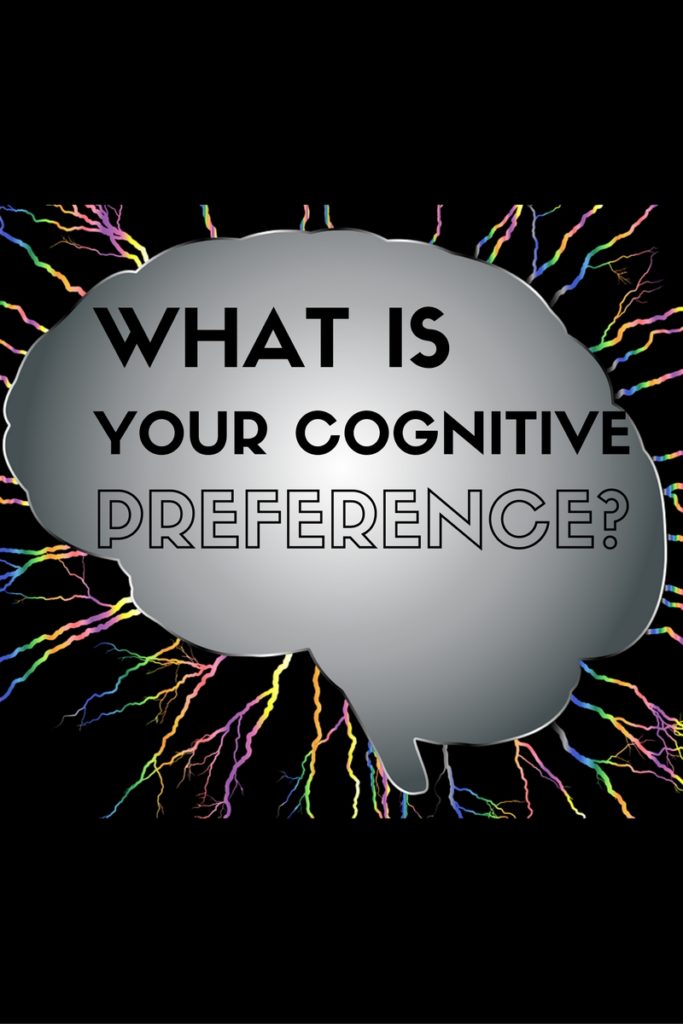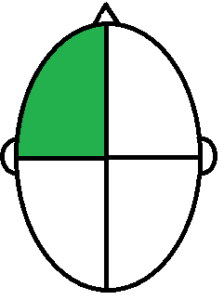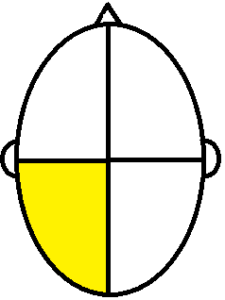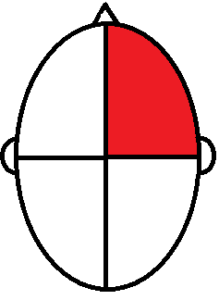Think about this: Your friend wants to go clubbing all night but you would rather stay at home reading a book. Your boyfriend is sitting on the couch, watching football and eating chips, while you are sitting next to him cleaning up every crumb as it falls. Your sister can’t wait to go on the awesome vacation she planned for the both of you but you need to plan in advance making sure you have the time off from work and the money for all of her crazy excursions.

In each of the above scenarios each person has different feelings about the same situation and neither person is necessarily wrong:
- Scenario 1: Your friend is outgoing and enjoys dancing and having a good time with friends. While your friend thinks this is how you will enjoy your Saturday night because it is “so much fun”, you would be happier reading your book at home. This is because you get your enjoyment out of relaxing and indulging in a good story.
- Scenario 2: Your boyfriend looks forward to relaxing after a long week of work by watching his favorite sports team. Add a cold beer and a bag of chips and he is in heaven. You’re freaking out because he is getting crumbs all over the carpet you JUST CLEANED and are stressing you will have to do it all over again.
- Scenario 3: Your sister planned a really great vacation for the two of you and is proud of her accomplishment in getting this done. She is so happy to spend time with you and show you the fun and exciting things she has planned. On the other hand, while you are excited, you are also feeling some anxiety. Do you have enough vacation days at work? How much will this trip cost? What if I don’t like anything my sister planned?
I’m sure these scenarios are relatable or are close to some situations you have been in. Sometimes you and your friend or significant other are just not on the same page. It doesn’t mean either of you are wrong, it just means you each have a different style. More specifically, you have different cognitive styles.
This post contains affiliate links. For more information please see my disclosures here.
What is a cognitive style?
I first learned about cognitive styles from an old boss and found the information fascinating. It has helped me learn and understand more about myself as well as others. So here is a little crash course of what I learned about cognitive styles. I am NOT an expert in this. I just want to share a little something that I found interesting.
The first thing I learned was to imagine your brain divided into four quadrants. A lot of my notes on this topic start off looking like this:

I know, I’m an amazing artist, but imagine this… You are looking down at the top of a brain that is divided into four. The pointy thing on top is the nose (this person may need plastic surgery) and the half-moons on each side are ears (again, plastic surgery).
Now take the image and add some color and vocabulary.

I don’t know why, but I think the word “basal” is so funny. It reminds me of basil, like the herb. Okay, off topic…
Now, we know everyone is different. Even if you are an identical twin you are not the same as your sibling. Everyone has a different cognitive style, social style, behavioral style, etc. Basically, we like to do things our way because that is what works for us! Each color of the brain represents a different cognitive style.
Green (Frontal Left)

Greens tend to be poker faced and investigative. They are influenced by information, structure and organization. If a Green doesn’t understand something s/he is easily frustrated as s/he needs to know the WHY of the situation. You can’t just tell a Green the ocean is blue. S/he needs validation, proof and an explanation as to WHY the ocean is blue. S/he will take the time to research data and information. Greens learn best through theory and information. Not being in control or not having enough time to complete a task properly will stress a Green out. They are also stressed by others not meeting expectations or providing incomplete information. When it comes to conflict, s/he will avoid an encounter as it is a waste of time.
Yellow (Basal Left)

Yellows are your typical list-making, rule following, routine peeps. (Yes, I just wrote peeps.) They need structure in the form of appointments and parameters for guidance. Yellows are logical and like to plan things in advance. The best invention for a Yellow is the planner. S/he can plan the day, make a list and complete one task at a time. It feels very good to cross something off the list. Everything should be fair and equal when it comes to dealing with a Yellow. Yellows learn best by taking notes, following step-by-step processes and through repetition. They like to know the HOW of the situation. You can’t just tell a Yellow to “go food shopping”. They need to know which store to go to and have a specific shopping list (brand, quantity, etc.). But wait! Don’t give a Yellow too much information. Data overload will stress a Yellow out, as will poor planning and preparation, no agenda and not being sure how to complete a task. If you want a Yellow to do something, compromise. Explain it in a way they will understand and feel comfortable with and they will happily do it for you.
Red (Frontal Right)

Reds are fast paced and like to get things done quickly! This can best be explained by organized chaos. They are eager to speak and get their ideas out there as they are looking for that “look at me, here I am!” feeling. Reds perform very well under pressure and prefer to multi-task. They appreciate a round of applause or a pat on the back in recognition for their efforts. Reds are big picture thinkers with short term deadlines. They are last minute workers. They like to know the WHAT IF in a situation and are typically hands off, delegating to others. Reds learn best by experimentation and activity. They like to take short cuts to get them wherever they need to be faster. Think of someone snapping their fingers – snap, snap, snap. Constantly going and moving and doing. Reds are put off by unnecessary tasks and things that take forever to do. They may be easily frustrated if people don’t immediately understand them. But, when it comes to conflict, Reds are ready to compete! Watch out for that fire!
Blue (Basal Right)

Blues are your talkative, empathetic, sensitive souls. They are emotional and social as they like to feel a connection. Blues need recognition in a different way than Reds. Blues like to feel like they are pleasing others whereas Reds are looking for confirmation. Blues are influenced by positive relationships. They are respectful of others and are focused on the WHO of the situation. Blues are people pleasers who love verbal conversation and social environments. They get stressed out if others are unhappy or if they are feeling isolated. Blues will accommodate others in any situation.
What’s your cognitive style?
So there you have it. The four cognitive styles. You may be leaning towards which one best defines you at this point, but you should know that this changes with age and development. By the end of your lifetime you will have experienced every color.
Now, let’s go back to our scenarios.
- Scenario 1: Your friend is most likely a BLUE. She is looking for that social experience and wants to be with you. You are most likely a YELLOW in this situation. You have your Saturday night planned out and are okay spending the night alone.
- Scenario 2: Your boyfriend is probably a RED. He is not thinking about where the crumbs are falling and how this is making you feel. He is living in the moment and excited to finally relax and watch his game. You are probably a GREEN. You know you just cleaned the floors and the data is pretty clear – the crumbs are going everywhere!
- Scenario 3: This one is tricky. Your sister planned a vacation so you would think she is a YELLOW, but she also had you in mind when she planned this and is focused on how you will feel about the vacation. This points in the BLUE direction. You, on the other hand, are a GREEN in distress. You need the facts and the information to back up everything she has planned. So, can someone be more than one color at once?
The answer is YES! You most likely have a little bit of each color in you, which is why it makes sense that as you age and mature you experience each color. However, there will always be one dominant color. In Scenario 3 above we don’t know enough about the sister to tell what color she is, but this was a great example of how people show different aspects of several colors.
If you’re still unsure what your cognitive style is I recommend checking out Dr. Katherine Benziger’s Thriving in Mind: The Natural Key to Sustainable Neurofitness![]() (affiliate link). I’ll be honest, I haven’t read the whole book, but the chapters I have read are a great way to relate the information I just explained. In Chapter 1, Dr. Benziger provides a Brain Dominance Self-Assessment. In this assessment, you read a series of phrases and put a checkmark next to the ones that describe you. At the end, you tally up your checkmarks and determine which part of your brain you use the most.
(affiliate link). I’ll be honest, I haven’t read the whole book, but the chapters I have read are a great way to relate the information I just explained. In Chapter 1, Dr. Benziger provides a Brain Dominance Self-Assessment. In this assessment, you read a series of phrases and put a checkmark next to the ones that describe you. At the end, you tally up your checkmarks and determine which part of your brain you use the most.
Chapter 10 is titled Getting Along and Communicating Clearly. I found it to be a great way to learn how to express myself as well as how to understand others, both at home and at work. When you start reading it and thinking about the people in your life, things start to click and you have an “ah ha” moment. As you’re reading, familiar faces will start popping into your mind like “Hey! Joe does this!” or “Wow! Mary said that last week!” It is pretty fascinating stuff.
So, what am I, you ask? I scream YELLOW! I am a basal left by a landslide. I am a super organized, rule following, list making maniac. Please keep this in mind as you read my other posts! Here are my scores from Dr. Benziger’s test:
Basal left (yellow) – 14
Basal right (blue) – 7
Frontal right (red) – 6
Frontal left (green) – 10
Now I want to hear what your cognitive style is! If you want to take Dr. Benziger’s test and discover more about yourself and others you can find it here![]() (affiliate link).
(affiliate link).





